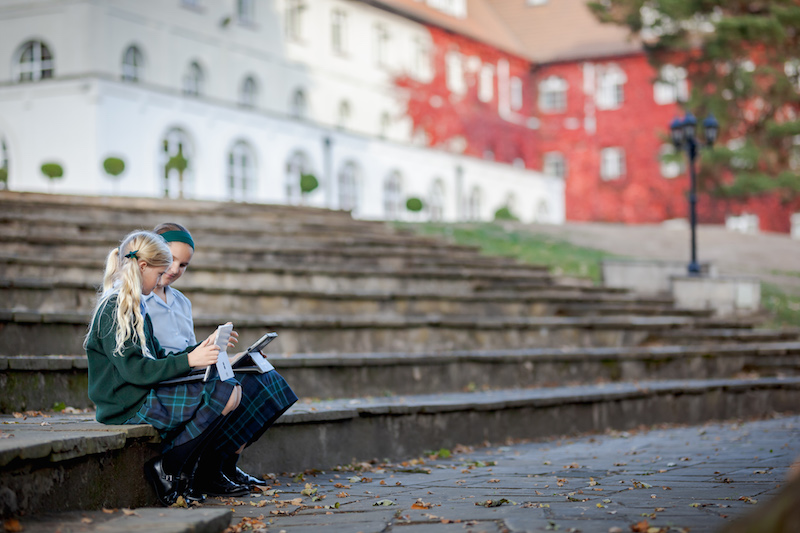Digital learning – what progress have we made?
Posted on 18th Nov 2020 in Online Learning, Which School?, School News
David McClymont, Director of IT of Downe House School, reflects on the use of technology in schools during lockdown...
In the wake of the Covid-19 pandemic and the resulting lockdown, technology played a crucial role in ensuring the continuity of teaching and learning for pupils who suddenly found themselves studying remotely at home with only virtual contact with their classmates. Not to mention the teachers who were faced with the challenge of adapting in just a few weeks to remote working, on-line collaboration and a whole plethora of new technologies to enable them to deliver the curriculum and support their pupils. All this at a time of huge anxiety and stress about the relentless spread of the Coronavirus across the globe.
In just a few weeks, schools and teachers were expected to switch from conventional face-to-face teaching in the classroom to livestreaming their lessons, creating video blogs and feedback, communicating via online chat, using new digital tools such as Flipgrid and Edpuzzle and attending Zoom or Microsoft Teams meetings.
However the pace at which this happened and its ultimate success was of course dependent on the existing digital framework in place, the level of IT support, availability of hardware and software and to what extent digital technologies and training had already been incorporated into teaching practice.
As a result, the outcomes for pupils varied enormously across schools in the UK as online learning was delivered with varying degrees of success and effectiveness. According to the social mobility charity, the Sutton Trust, a third of pupils were taking part in online lessons while schools were closed and pupils from independent schools were twice as likely as state school pupils to take part in online lessons every day. Crucial to the success of the transition to online learning were the availability of devices or pupils’ access to broadband and the digital capability of the school and its staff.
At Downe House, we introduced our Digital Strategy four years ago based on the Microsoft Office 365 platform and implemented comprehensive staff training and a phased roll-out of the MS Surface programme to all year groups so that every pupil and teacher had their own Microsoft Surface. Never did we dream that our digital capabilities would become so critical or that we would have to take the whole School online and deliver entirely on-line teaching and learning due to a global pandemic! However, thanks to the work we had already done, the transition to virtual teaching proved relatively smooth as everyone was already very familiar with using online tools such as Teams and OneNote. So much so, we were able to continue to give our pupils a full timetable of lessons taught by their teachers and livestreamed to their homes across the globe both in real time, and as recorded lessons. Microsoft Stream provided a simple way for staff to record and share their lessons, which can now be used as a further resource for future pupils.”
Of course, whether they were accustomed to using digital tools or not, most teachers were plunged into a very different approach to teaching and had to quickly master a whole range of digital skills. Teachers had to work hard to adapt to a completely new way of working and finding creative ways to engage pupils online whilst taking into account safeguarding issues. Whilst research is ongoing to assess the effectiveness of remote learning, anecdotal evidence shows that it does work and many pupils thrived on the alternative learning experience, enjoyed acquiring new digital skills or found it helpful to go back and watch a recorded lesson again.
Now that pupils are back in school, there is an urgent need for debate about the way forward for digital teaching as the importance of equipping pupils with digital skills and tools for the workplace cannot now be disputed. A cultural shift has already taken place in digital literacy and many teachers have embarked on their digital journey with more confidence than ever before. Investment is needed across the board in hardware, connectivity, staff training, dedicated support and resources as well as a careful approach to ensuring the perfect balance between face-to-face teaching and utilisation of digital technologies.
The lockdown and school closures were unprecedented as were the outstanding efforts of schools to ensure the continuity of teaching and learning online for the nation’s children. Perhaps there could be a silver lining to the crisis in the form of a quantum leap forward for schools embracing digital learning and harnessing its power to transform education for everyone.
This article first appeared in Which School? 2021, which is available now in print and online. You can read the full version here...